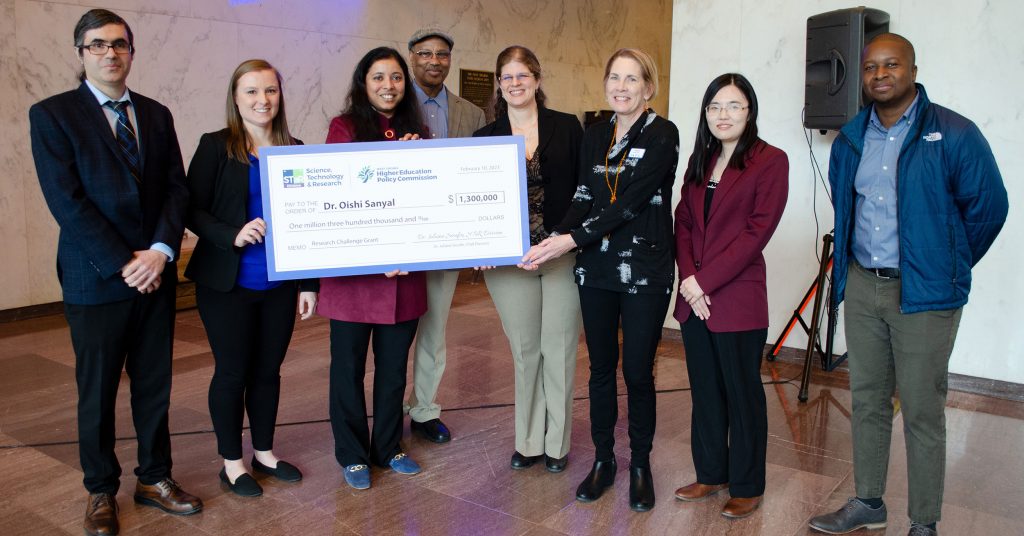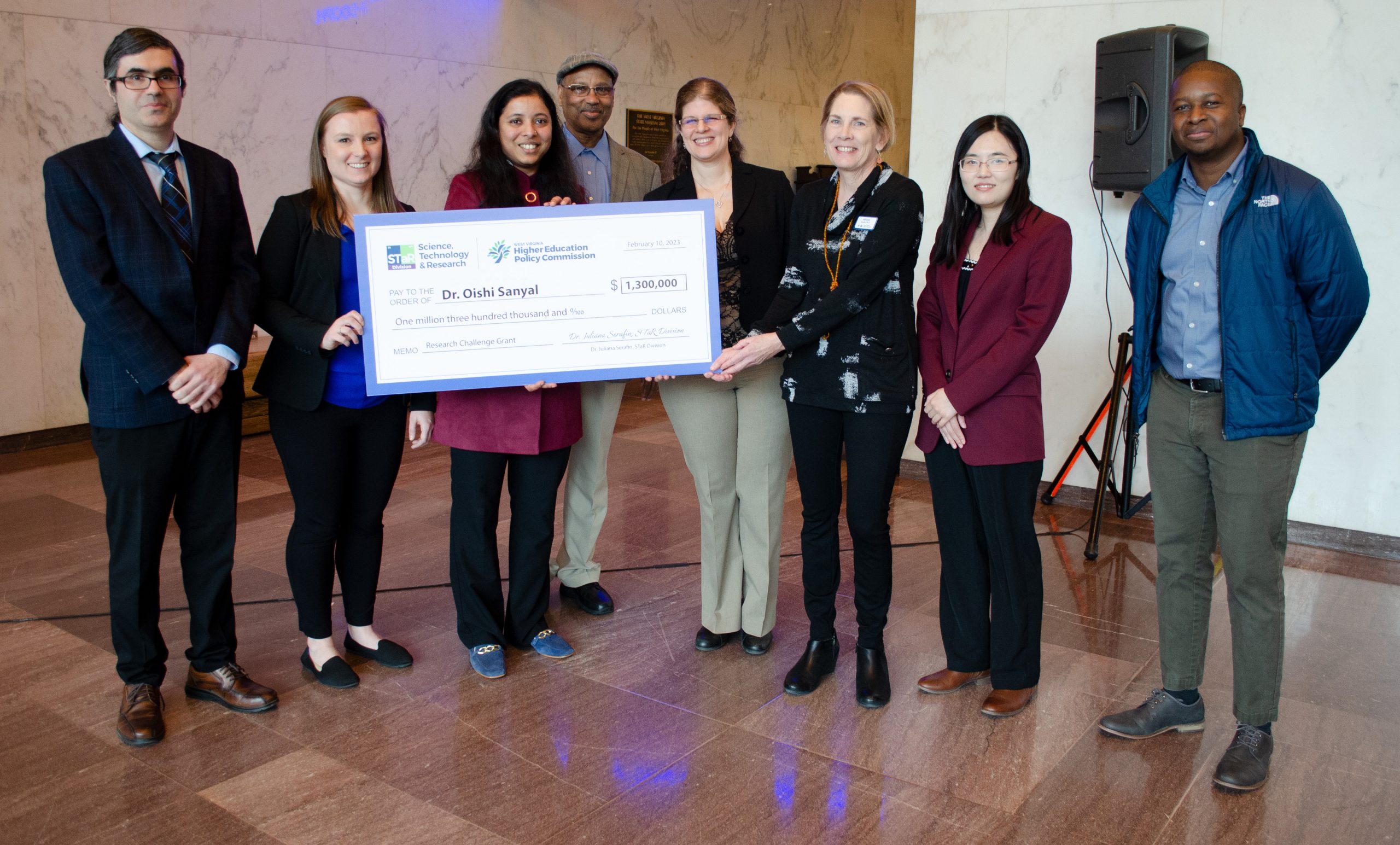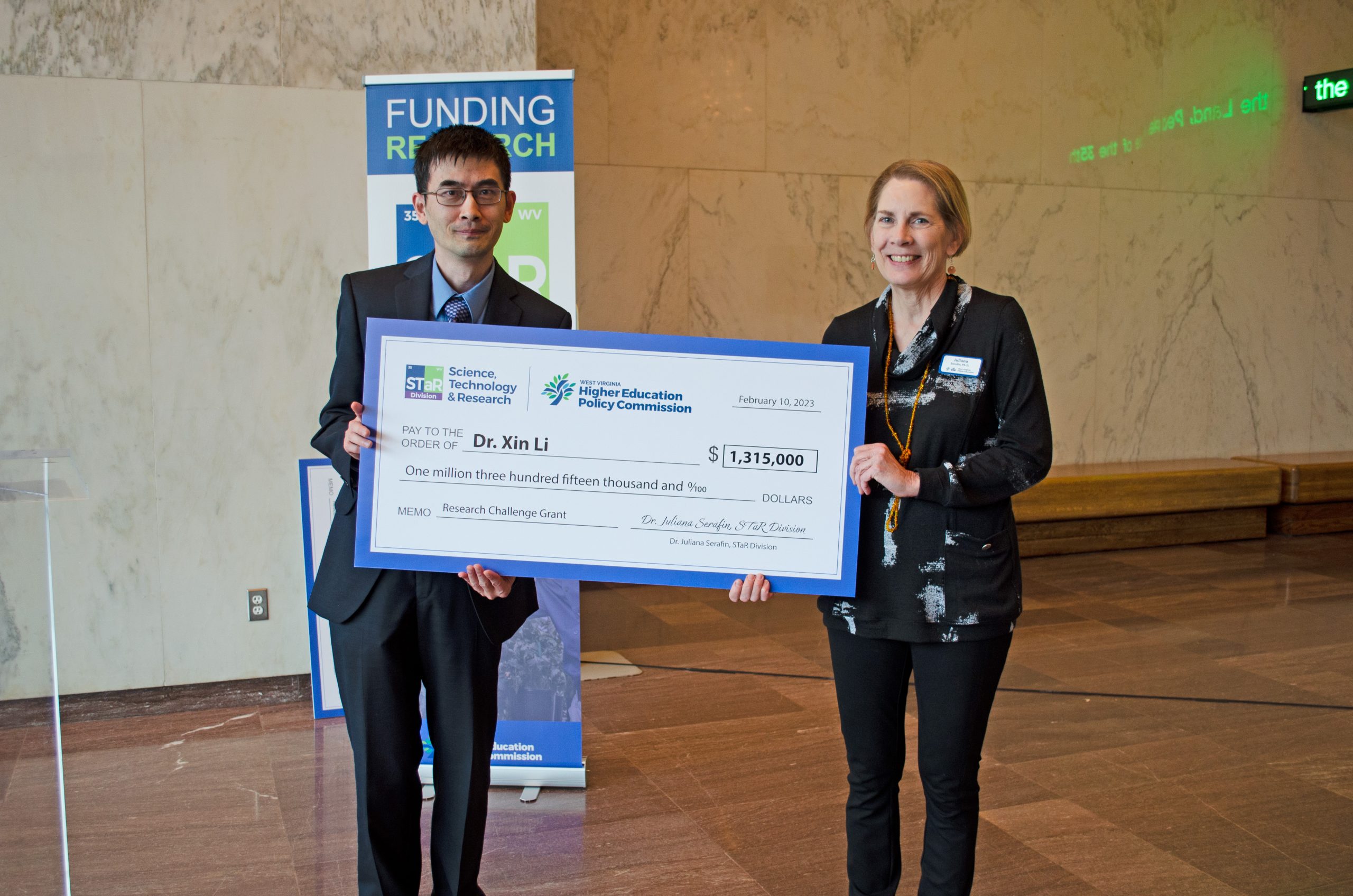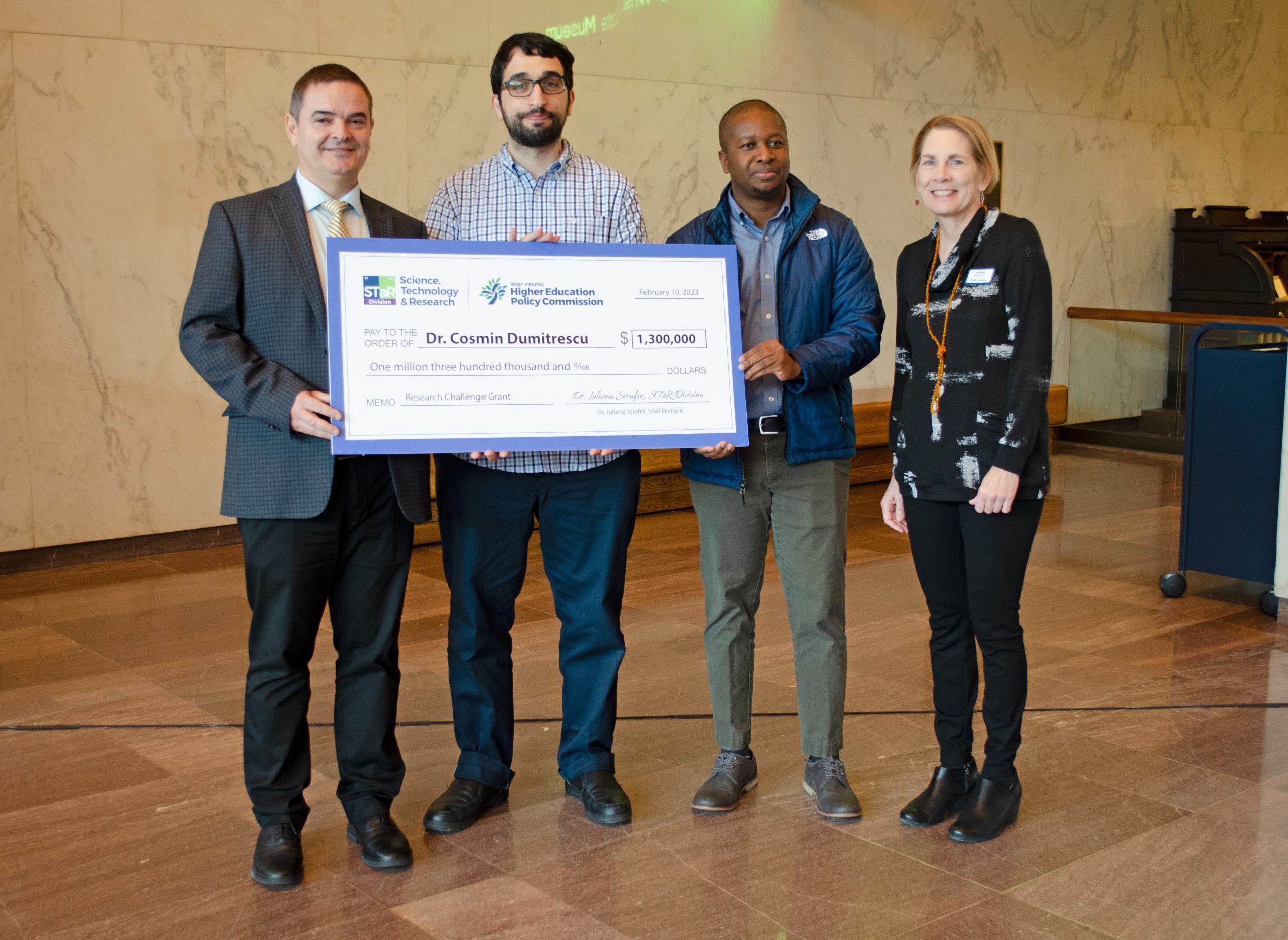Over $3.9 million in state funding will foster economic development and workforce advancement by supporting the creation of university-based research centers in West Virginia.
STaR Division: Science, Technology & Research (STaR) at the West Virginia Higher Education Policy Commission awarded three Research Challenge Grants (RCGs) worth approximately $1.3 million each to directly support research conducted by students and faculty at West Virginia higher education institutions. Research teams are comprised of faculty from Bluefield State University, Concord University, Marshall University, West Virginia University and West Virginia State University. The awards were announced on Friday, February 10 at the Culture Center on the West Virginia State Capitol complex.
“We are excited to be able to fund these three excellent research projects with Research Challenge Grants for 2023-27 cycle,” said Dr. Juliana Serafin, senior director of STaR. “We look forward to the growth in research enterprise and economic development that will result from this investment by the state of West Virginia.”
Research Challenge Grants are supported by the Research Challenge Fund, established by the West Virginia Legislature in 2004 to build research capacity and competitiveness at the state’s colleges and universities. The fund is managed by STaR.
“These awards give researchers, especially students, the opportunity to collaborate with those at other institutions in the state and develop partnerships that will make their funding proposals more competitive,” Serafin said.
The RCGs promote statewide research collaboration among higher education institutions, an important factor when competing for federal funding, particularly from the National Science Foundation. Broadening the participation of first-generation college students and other underrepresented groups is also crucial.
“We are thrilled today to be able to present new state-funded research grants to faculty representing several of our universities that will create new opportunities for our students to collaborate with each other, with those at other universities and with outstanding faculty who are pushing them toward trailblazing discoveries,” said Dr. Sarah Armstrong Tucker, West Virginia’s Chancellor of Higher Education.
Past Research Challenge Grant winners emphasized how the state-funded grants provided clout when seeking further support with federal agencies and industry donors. Awardees from the 2017-2022 cycle transformed their initial $1.3 million investments into more than $59 million in combined follow-on funding to continue their research projects.
Research Challenge Grant Awards
Drs. Xin Li, V’yacheslav Akkerman, Lian Li, Wenyuan Li, Bin Liu and Aldo Romero of West Virginia University and Drs. Xiaojuan (Judy) Fan and Huong Nguyen of Marshall University were awarded $1,315,000 over five years for “Data Driven Autonomous Experiments for Energy Sciences Principles of Machine Learning.”
“The new Research Challenge Grant project connects artificial intelligence (AI) researchers with energy science researchers to explore the emerging frontiers of ML-based autonomous experiments for material discovery and energy systems,” said Xin Li, project principal investigator. “It will provide an excellent opportunity for STEM students to engage with cutting-edge research that can impact our state’s future.”
The team plans to work on expanding convergence research at the intersection of artificial intelligence/machine learning and energy sciences by developing a class of novel physics-informed surrogate models.
Drs. Oishi Sanyal, Madelyn Ball, Jianli (John) Hu, Yuhe Tian, and Carrie White of West Virginia University; Drs. Rosalynn Quiñones-Fernández and Roozbeh (Ross) Salary of Marshall University; Dr. Tesfaye Belay of Bluefield State University; and Dr. Rodney Tigaa of Concord University were awarded $1,300,000 over five years for “Metal-Embedded Carbon-based Catalytic Membranes for Co-production of Ammonia and Ethylene.”
“Receiving the Research Challenge Grant allows our team to pursue a high-risk but impactful research direction and obtain preliminary data prior to applying for external federal grants,” said Sanyal, project principal investigator. “Along with research, this grant involves a strong education component which will be used to train the next generation of STEM workforce across four West Virginia-based institutions. Funds like these are critical to support students from all backgrounds, including underserved and underrepresented communities, and train them in cutting-edge technologies. The state of West Virginia will clearly benefit from such a trained workforce as they will contribute to research, entrepreneurship and future manufacturing.”
The team plans to develop a novel dual-layered catalytic hollow fiber membrane for co-production of ethylene and ammonia from natural gas in microwave-enhanced reactions.
Drs. Cosmin Dumitrescu, V’yacheslav Akkerman, Omid Askari, Jianli (John) Hu, Bingyun Li, Earl Scime and Xueyan Song of West Virginia University; Dr. Rodney Tigaa of Concord University; and Dr. Eyas Mahmoud of West Virginia State University were awarded $1,300,000 over five years for “Synergistic Conversion of Captured C02 and Green H2 to Value-Added Products for a Decarbonized Economy.”
“The project objective is to develop process-intensified modular technologies that will convert captured carbon dioxide and green hydrogen to green ethylene and green ammonia,” said Dumitrescu, project principal investigator. “The production of green ethylene is an opportunity to revive West Virginia’s polymer industry, while green ammonia is an efficient, decarbonized and low emissions alternative to electrification for hard-to-electrify industries.”
The team plans to advance current science and technologies to promote local utilization of captured carbon dioxide and the production of green hydrogen in West Virginia residential, commercial, and industrial sectors.
“With the help of the Research Challenge Grant funding, the project will create an interdisciplinary STEM team dedicated to supporting underrepresented communities and the necessary infrastructure to grow project activities into a vibrant, self-sustaining research and development nucleus,” Dumitrescu said.



